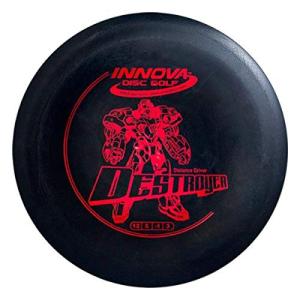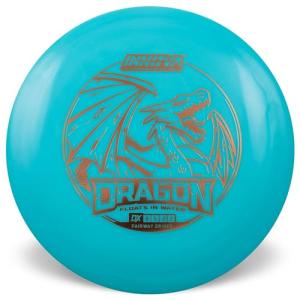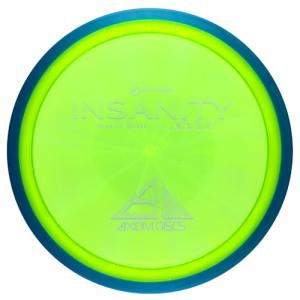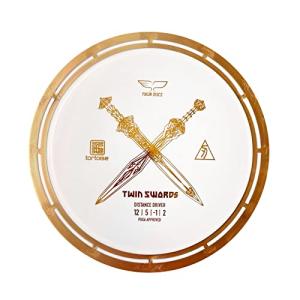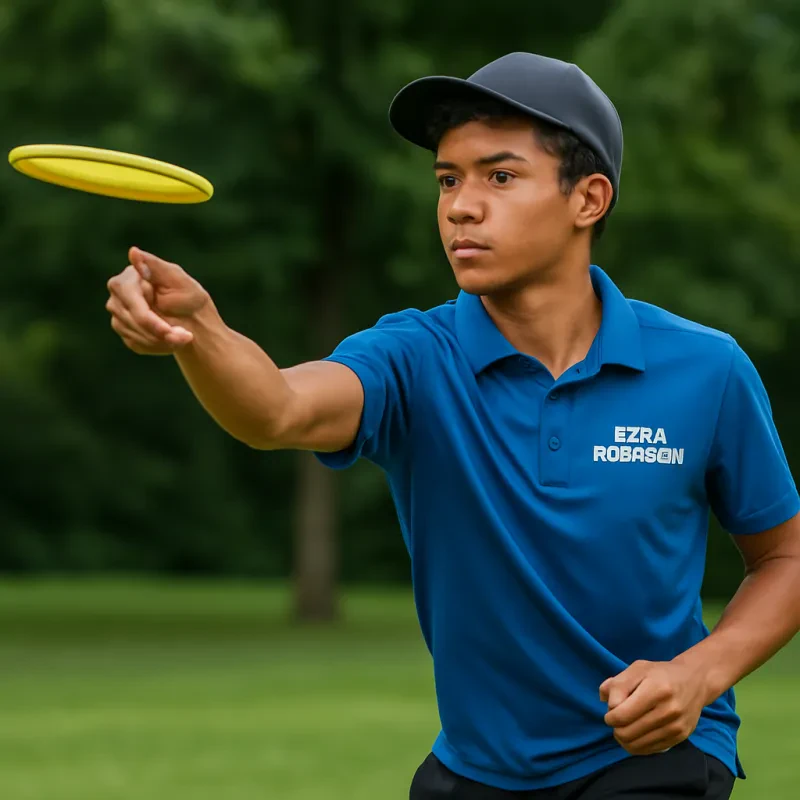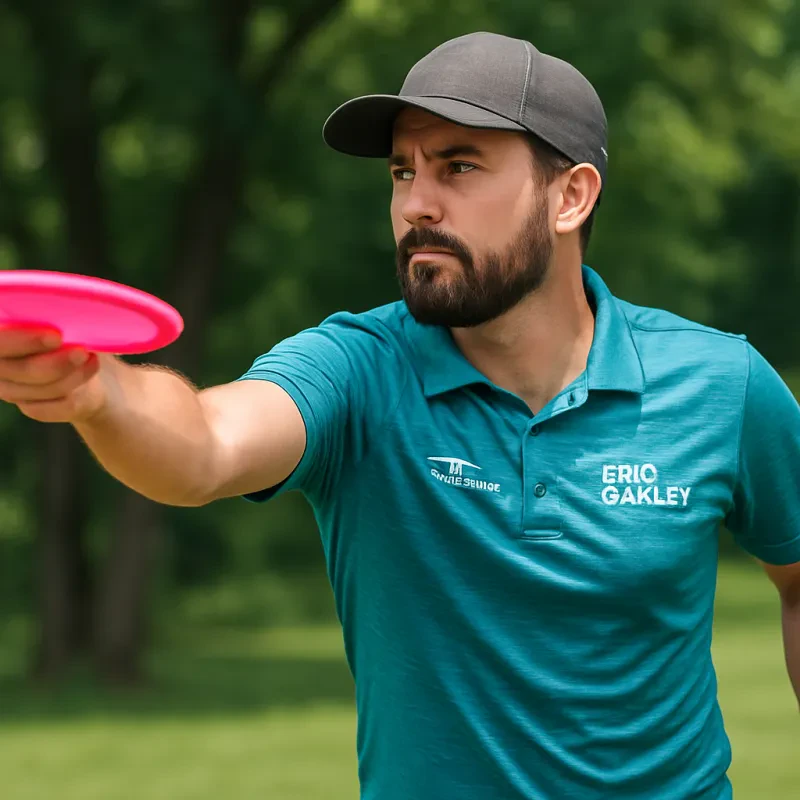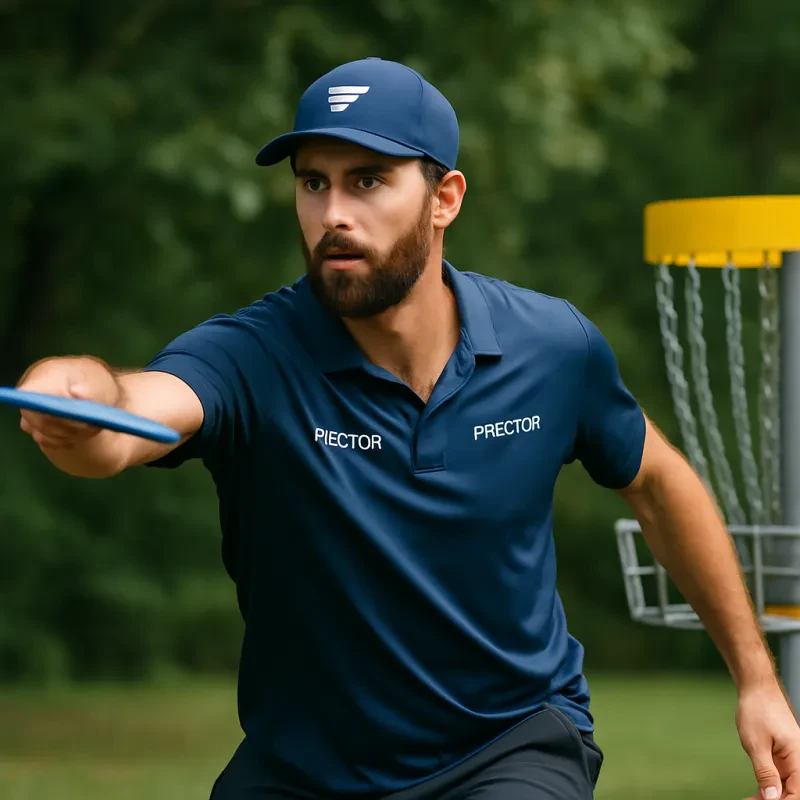Disc golf has a fascinating origin story that dates back to the 1960s, a time when frisbees were taking off in popularity. It all began when a group of outdoor enthusiasts in California envisioned a new way to enjoy their favorite pastime—throwing flying discs. These imaginative individuals sought to add a competitive twist to the recreational flying of discs and sought to create a game where players could aim for specific targets.
The concept was inspired by traditional golf, but instead of using clubs and balls, players used frisbees to aim for metal baskets. This innovative approach was a game changer. As the idea gained traction, more and more players began to enjoy this unique combination of skill, strategy, and fun, leading to the evolution of disc golf as we know it today.
In 1975, a pivotal moment occurred when a high school physical education teacher named “Steady” Ed Headrick put his stamp on the game. He designed the first official disc golf target, which was a metal basket that made it easier to score. This invention played a crucial role in formalizing the game. So, when people ask who invented disc golf, Ed's name is often at the forefront of the conversation, as he helped to lay the foundation for the sport's rules and equipment.
Headrick’s vision didn’t stop with the targets; he also worked to promote the sport. He organized tournaments and even established the Professional Disc Golf Association (PDGA) in 1976, which further solidified disc golf’s legitimacy and growth across the United States and beyond. The combination of innovation and community passion fueled the popularity of disc golf, transforming it from a casual outdoor activity into a recognized sport enjoyed by millions today.
Key Innovators in Disc Golf
When exploring who invented disc golf, it's essential to highlight the key innovators who played a pivotal role in shaping the game. One of the most significant figures in the early development of disc golf is George Sappenfield. In the 1970s, he organized the first-ever disc golf tournament in California, solidifying the sport's place in recreational history. His efforts to promote the game helped create a community of enthusiastic players and laid the groundwork for organized play.
Another influential innovator is “Steady” Ed Headrick, often referred to as the "Father of Disc Golf." Headrick designed the first official disc golf target in 1975, known as the Disc Pole Hole. This invention provided a standardized way to measure progress and score in the game, which was a game changer for disc golf. Headrick's vision extended beyond just targets; he founded the Professional Disc Golf Association (PDGA) to help formalize the rules and competitions, ensuring that the sport gained recognition and respect.
In addition to Sappenfield and Headrick, several other pioneers contributed to the popularity of disc golf. The works of Tom Monroe and the countless players who helped spread the word in the 1980s and 1990s were crucial. Many of these innovators introduced new disc designs and advanced techniques, influencing how the game is played today. Their passion and dedication to the sport helped establish disc golf as a prominent and enjoyable pastime for people around the world.
Milestones in Disc Golf History
Disc golf has a rich history that dates back to the early 1960s, a time when a few innovative minds began to transform a casual pastime into a formal sport. It all started with the question of who invented disc golf. Many credit "Steady" Ed Headrick as the pioneer who pioneered the game and established its rules. In 1964, Headrick introduced the first disc golf target, known as the "Pole Hole," which featured a metal pole with a basket attached—an invention that fundamentally changed how the game was played.
In 1974, the first official disc golf tournament, the "Disc Golf World Championships," took place in California, attracting players and enthusiasts from all over. This event helped legitimize disc golf as a sport and brought together a community of players committed to sharing their love for the game. As the sport grew, more competitive tournaments began to pop up across the country, showcasing individual talent and creating a collaborative spirit among players.
The 1980s marked a significant period for disc golf as it gained national recognition. The formation of organizations like the Professional Disc Golf Association (PDGA) in 1976 provided structure and support for players and tournaments. This era saw the establishment of the official rules of play, which clarified the game's format and helped standardize disc golf courses. Players began to adopt more sophisticated strategies and techniques, further evolving the game.
By the 1990s and 2000s, disc golf was truly becoming a worldwide phenomenon. The advent of better disc technology, along with increased media coverage, made the sport more accessible than ever. Aspiring players could find a local course to practice their skills, while tournaments grew larger, attracting sponsorships and professional players. Today, the question of who invented disc golf is often followed by a discussion about its legacy, with Headrick's contributions still resonating in the rules and format of play that we see today.
The Game's Evolution Over Time
The game of disc golf has undergone significant transformations since its inception. Originally played in the 1960s with simple objects like frisbees tossed at targets such as trees, the sport has evolved into a structured and competitive activity. The question of who invented disc golf is often brought up when discussing how it became organized and popularized. While various individuals contributed to its development, it was during this time that the idea of designated courses and rules began to take shape.
As the sport gained traction, improvements in disc technology played a crucial role in its evolution. Early frisbees were made from different materials and did not provide the aerodynamic precision needed for long throws. The introduction of specialized discs in the 1980s allowed players to experience enhanced control and distance. This technological advancement made disc golf more accessible and appealing to a broader audience, further solidifying its place in outdoor recreation.
In addition to advancements in equipment, the establishment of official tournaments and professional organizations provided a framework that propelled disc golf into the spotlight. Events like the PDGA (Professional Disc Golf Association) Championships began attracting players from around the world, amplifying awareness of the sport. This organized competitive scene not only answered the question of who invented disc golf but also celebrated those who dedicated their time to promote and refine the game.
Today, disc golf continues to grow, with new courses appearing in parks and communities everywhere. The diversity of players—from beginners to seasoned professionals—illustrates the sport's inclusivity and appeal. The journey from a casual activity to a recognized sport shows how innovations and community efforts have shaped disc golf into what it is today, proving that the legacy of those who invented disc golf is still very much alive.
